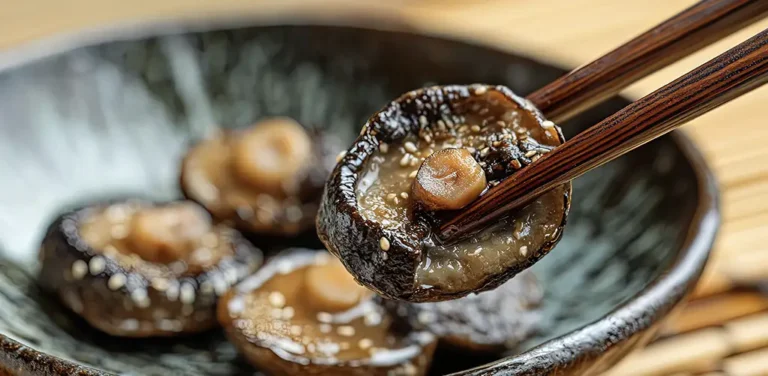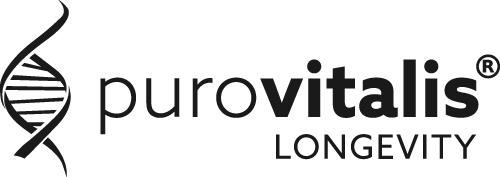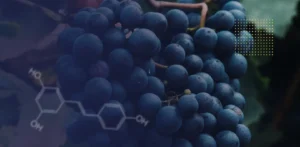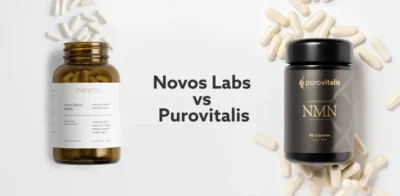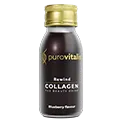
L-Ergothioneine has been overlooked for years—but lately, this fascinating compound is grabbing attention for its potential health benefits and role in preventing diseases. Interest really took off in 2005 when scientists discovered OCTN1, a special transporter that helps L-Ergothioneine travel effectively around the body and even cross the blood-brain barrier to support our health.
The levels of L-Ergothioneine naturally drop with age, especially after turning 60, and low levels have been linked to Parkinson’s, mild cognitive impairment, and Crohn’s disease[1].
Read more about research-backed benefits here: L-Ergothioneine benefits based on research
Since our bodies can’t make L-Ergothioneine itself, its needed to get it from foods or supplements. In this blog, we’ll explore the best ways to get this impressive nutrient into the diet.
L-Ergothioneine food sources
The amount of L-Ergothioneine varies significantly across different foods. While some contain only small traces, mushrooms stand out as particularly rich sources. Unlike plants and animals, mushrooms can naturally produce L-Ergothioneine themselves, making species such as porcini, shiitake, and oyster mushrooms especially good dietary sources. It is also present in fermented foods like tempeh and in smaller amounts in certain vegetables, including garlic and asparagus. Furthermore, studies show that L-Ergothioneine can also be found in human, cow, and goat milk, as well as infant formula[2].
A recent study from 2023 analyzed various mushrooms worldwide to measure their L-Ergothioneine content[3]. Using advanced and precise methods, they found that the concentration can vary greatly depending on species, cultivation methods, and soil quality, with some mushrooms containing extremely high levels. Below you will find the mushrooms richest in L-Ergothioneine from this study:
Top 10 mushrooms rich in L-Ergothioneine
| Mushroom type | mg/kg (dry weight) | mg/kg (wet weight)* |
|---|---|---|
| Golden Oyster (grape marc) | 11,800 | – |
| Golden Oyster | 8,300 | 10,000 |
| Shiitake | 2,090 | 1260.4 |
| Oyster | 2,010 | 118.91 |
| Polypore | 1,840 | – |
| Porcini | 1,812.4 | 528.14 |
| King Oyster | 1,720 | 234.85 |
| Maitake | 1,130 | 103.92 |
| Chestnut | 1,290 | – |
| Grey Knight | 910 | – |
Does the common champignon contain L-Ergothioneine?
While less common varieties like shiitake, porcini, and oyster top the list for L-Ergothioneine content, there’s another mushroom that deserves attention: Agaricus bisporus – better known as the champignon.
A 2020 scoping review analyzed 68 studies on the health effects and bioactive compounds in Agaricus bisporus. The researchers found that these mushrooms do contain L-Ergothioneine, though in lower amounts than shiitake. On average, champignons provide 2–7 mg of L-Ergothioneine per kilo of fresh mushroom, compared to 100–120 mg/kg in shiitake[4].
Even if they don’t top the list, champignons remain a reliable source, especially for those who eat them regularly – whether on pizza or in stews. And as the world’s most consumed mushroom, they can still make a meaningful contribution to daily L-Ergothioneine intake, particularly for those who rarely eat the more special varieties.
Fermented foods and L-Ergothioneine
Fermented foods like miso, tempeh, and natto are well known for supporting gut health – but they can also contain small amounts of L-Ergothioneine. While the levels of L-Ergothioneine are lower than those found in mushrooms, several studies have confirmed its presence in selected fermented products.
A 2024 study highlights that plant-based fermented foods like kimchi, sauerkraut, tofu, and sourdough bread not only contain various beneficial bacteria and show antioxidant activity, but may also provide small amounts of L-Ergothioneine. Interestingly, the researchers identified the bacterium Methylobacterium, which is known to produce L-Ergothioneine, suggesting that fermented vegetables could be a minor dietary source of L-Ergothioneine.[5].
So while fermented foods are primarily associated with digestive support and gut-friendly bacteria, some may also provide trace amounts of ergothioneine – especially when specific bacteria are present.
If you’re looking for a reliable L-Egothioneine supplier, our Liquid Collagen drink contains highest-grade L-Ergothioneine:
Cultivation, soil, and animals consuming L-Ergothioneine
It’s not just the type of mushroom that determines how much L-Ergothioneine it contains – the soil it grows in matters too. Soils rich in organic material generally lead to higher levels of this nutrient. Wild mushrooms like porcini often contain more because they grow naturally in undisturbed soil.
A new 2023 study shows that certain soil fungi – called arbuscular mycorrhizal fungi (AMF) – help plants absorb L-Ergothioneine from the soil. Plants like asparagus, beans, wheat, and oats don’t produce the compound themselves, but they can take it up through their roots if AMF are present. In the study, plants grown with these fungi had much higher levels of L-Ergothioneine. Black beans, in particular, had up to 72 times more than those grown without[6].
Animals that eat mushrooms or plants from AMF-rich soil may also absorb small amounts of L-Ergothioneine, though far less than from mushrooms.
L-Ergothioneine in supplements
According to previous study, spirulina (Arthrospira platensis) contains relatively high amounts of L-Ergothioneine compared to other non-fungal foods. It is highlighted as one of the naturally rich dietary sources and noted for its historical use and investigation for medicinal properties[7].
L-Ergothioneine is often included in products that focus on supporting:
- Skin elasticity and anti-aging
- Cellular energy
- Protection against oxidative stress
- A healthy immune system
It is commonly combined with other ingredients like collagen, antioxidants, and vitamins to create broader benefits. For example, L-Ergothioneine is also one of the supporting ingredients in Purovitalis’ Rewind Liquid Collagen, together with a range of other nutrients such as glycine and selenium designed to promote healthy aging and skin vitality.
Related: Sources of antocyanins – Top foods and supplementation forms
Common L-Ergothioneine dose
The most commonly used L-Ergothioneine dose in supplements ranges between 5 and 10 mg per day, with some products offering up to 20–30 mg. Human studies so far have used doses between 5 and 25 mg daily without reporting adverse effects. While these amounts seem sufficient to support antioxidant activity and cellular protection, there is currently no established daily requirement, and the optimal dose likely depends on individual factors such as age, diet, and health status.
Since L-Ergothioneine is primarily obtained through diet, consuming mushrooms two to three times per week may help maintain healthy levels naturally. However, content can vary significantly between mushroom types and how they’re grown, making supplements a more consistent source for some individuals.
L-Ergothioneine side effects
L-Ergothioneine has so far been considered safe. No serious L-ergothioneine side effects have been reported, even at higher intake levels. As the compound is naturally present in various foods, it is generally well tolerated. However, individuals with known allergies to mushrooms or specific algae sources should exercise caution.
Be cautious with wild mushrooms
While mushrooms are a natural source of L-Ergothioneine, it’s important to note that foraging wild mushrooms without proper expertise can be dangerous. Some mushroom species are toxic – and in certain cases, even life-threatening – even in small amounts. If you want to increase your L-Ergothioneine intake through diet, the safest option is to choose cultivated edible mushrooms from trusted sources or opt for supplements with verified content.
The natural sources of L-Ergothioneine – and why they matter
L-Ergothioneine is a fascinating compound that the body cannot produce on its own. Instead, we rely entirely on what we eat. Among all natural sources, mushrooms stand out – with varieties like golden oyster, shiitake, and porcini containing particularly high levels. Fermented foods and spirulina also offer smaller amounts, adding extra variety to a longevity-focused diet.
Including these foods regularly can help support your body’s natural defense systems. And for those who want a more steady intake, high-quality supplements based on mushroom extracts or fermentation provide an easy solution. Whether through your plate or your supplement routine, ensuring a good supply of L-Ergothioneine could be a small but meaningful choice for lifelong health.
References
- Cheah IK, Halliwell B. Ergothioneine, recent developments. Redox Biol. 2021;42:101868. doi:10.1016/j.redox.2021.101868.
- Halliwell B, Tang RMY, Cheah IK. Diet-Derived Antioxidants: The Special Case of Ergothioneine. Annu Rev Food Sci Technol. 2023;14:323–345. doi:10.1146/annurev-food-060822-122236.
- Tian X, Thorne JL, Moore JB. Ergothioneine: an underrecognised dietary micronutrient required for healthy ageing? Br J Nutr. 2023;129(1):104–114. doi:10.1017/S0007114522003592.
- Blumfield, M., Abbott, K., Duve, E., Cassettari, T., Marshall, S., & Fayet-Moore, F. (2020). Examining the health effects and bioactive components in Agaricus bisporus mushrooms: A scoping review. The Journal of Nutritional Biochemistry, 84, 108453.
- Ngamsamer, C., Muangnoi, C., Tongkhao, K., Sae-Tan, S., Treesuwan, K., & Sirivarasai, J. (2024). Potential health benefits of fermented vegetables with additions of Lacticaseibacillus rhamnosus GG and polyphenol vitexin based on their antioxidant properties and prohealth profiles. Foods, 13(7), 982.
- Carrara JE, Lehotay SJ, Lightfield AR, Sun D, Richie JP Jr, Smith AH, et al. Linking soil health to human health: Arbuscular mycorrhizae play a key role in plant uptake of the antioxidant ergothioneine from soils. Plants People Planet. 2023 Feb 21. doi:10.1002/ppp3.10365.
- Halliwell B, Cheah IK. Ergothioneine – a diet-derived antioxidant with therapeutic potential. FEBS Lett. 2015;589(14):1653–1660. doi:10.1016/j.febslet.2015.05.029.
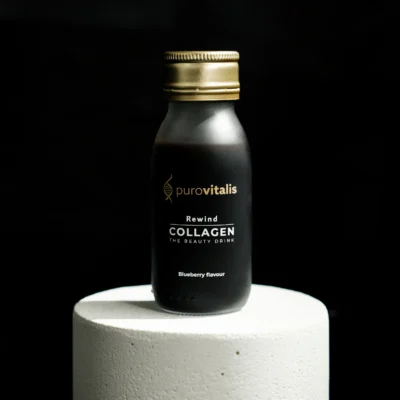
Experience the best of Collagen with Purovitalis liquid formula. Try it out!

